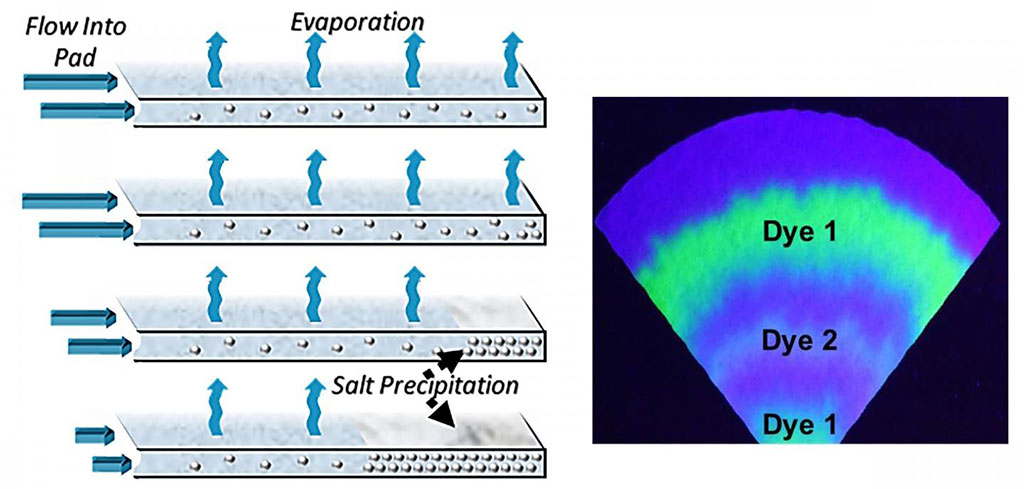A Simple Paper-Based, Wearable Device for Long Term Sweat Analysis
By LabMedica International staff writers
Posted on 16 Jun 2020
By cleverly manipulating paper geometry, researchers created a paper-based wearable device to collect, transport, and analyze sweat for an extended period.Posted on 16 Jun 2020
Sweat can be used to obtain an exact measurement of concentrations of medications in the blood. Furthermore, the concentrations of stress biomarkers (hormones and neurotransmitters) in bodily fluids such as sweat predict the physical and mental state of the individual.

Image: The evaporation of sweat on paper pads could be used for fluid transport in a wearable device over long periods of time. The resulting dry layer of caked salts would preserve a `time-stamped` record of biomarkers of interest (Photo courtesy of Dr. Orlin D. Velev and co-authors, North Carolina State University)
A major problem that has so far restricted the use of wearable paper-based sweat sensors is that sweat contains salt, which, upon evaporation, becomes deposited on the device and interferes with fluid flow. To solve this problem, investigators at North Carolina State University (Raleigh, USA) characterized and analyzed how capillary action and evaporation could cooperatively be used to transport and process a sweat-like fluid containing dissolved salts and model analytes.
The investigators postulated that the joint action of capillary wicking and evaporation would sustain continuous and long-term withdrawal of the sweat-like fluid. In the laboratory they then demonstrated that paper strips of controlled geometry could passively pump fluid for sensing purposes for long duration. Thus, non-invasive osmotic extraction combined with paper microfluidics and evaporative disposal enabled sweat collection and monitoring for periods exceeding 10 days. Since the process was driven by the liquid wicking through paper, the device did not require an external power source.
The investigators also demonstrated that the salt film deposited at the evaporation pad would eventually lead to cessation of the process but at the same time would preserve a record of analytes that could be used for long-term biomarker monitoring in sweat.
"We expected that the flow of the model sweat will be suppressed by the deposition of a salt layer inside the drying pad," said senior author Dr. Orlin Velev, professor of chemical and biomolecular engineering at North Carolina State University. "By following the flow of model sweat, we found, quite surprisingly, that such a simple paper construct can achieve continuous sweat pumping and disposal for very long periods."
The wearable device for sweat analysis was described in the June 9, 2020, online edition of the journal Biomicrofluidics.
Related Links:
North Carolina State University














